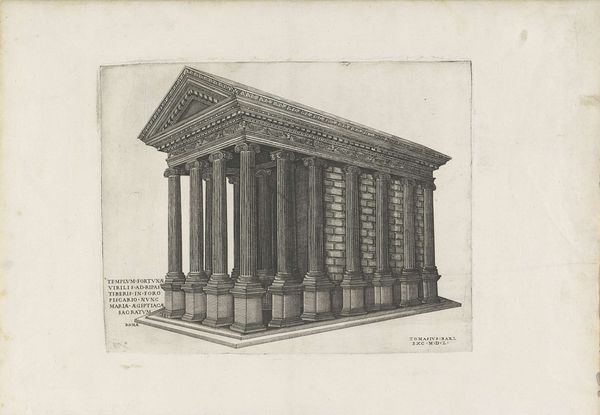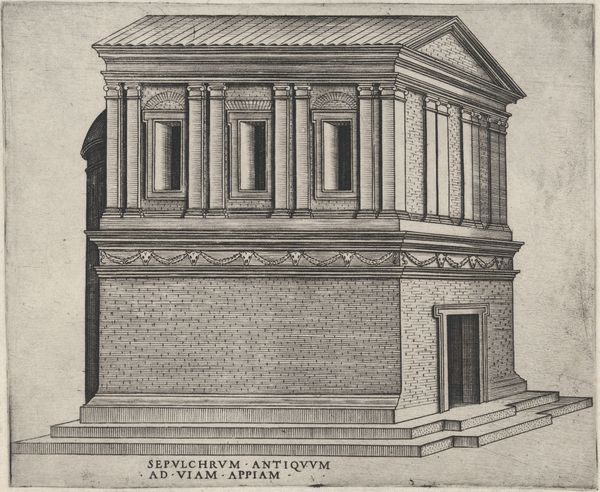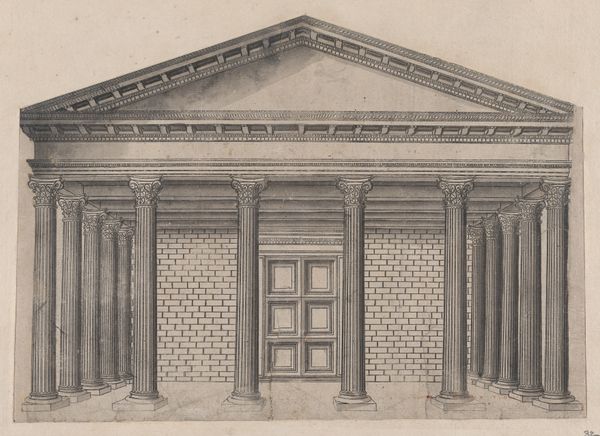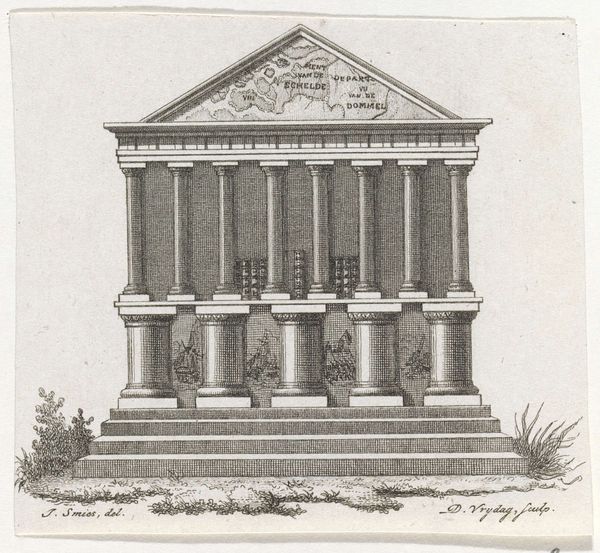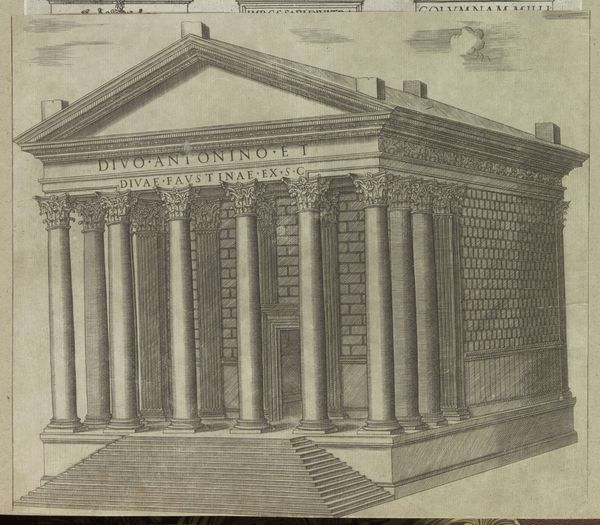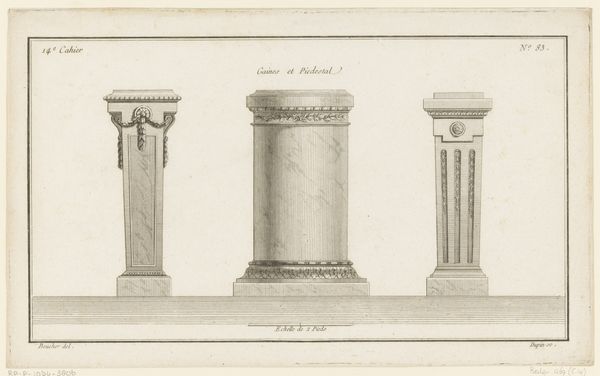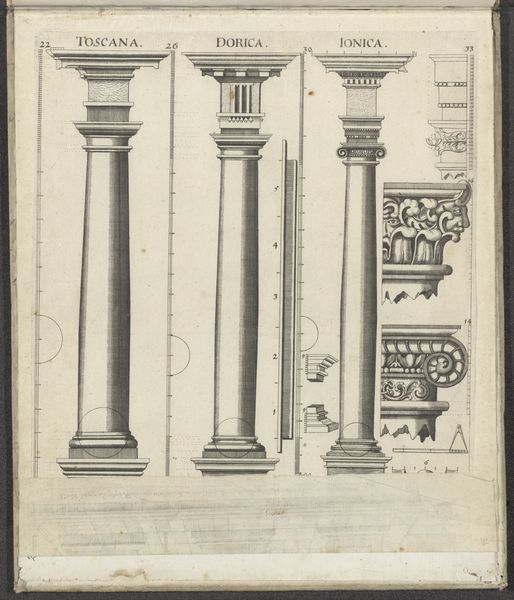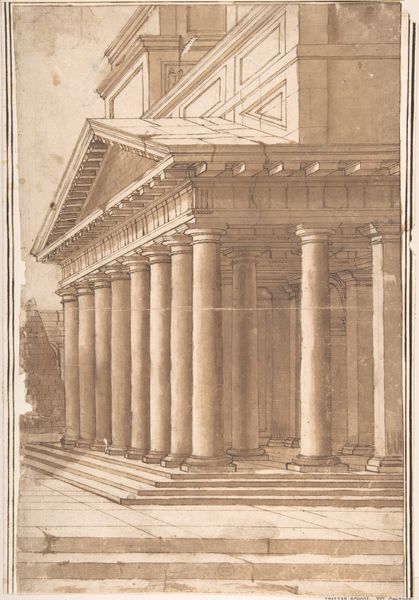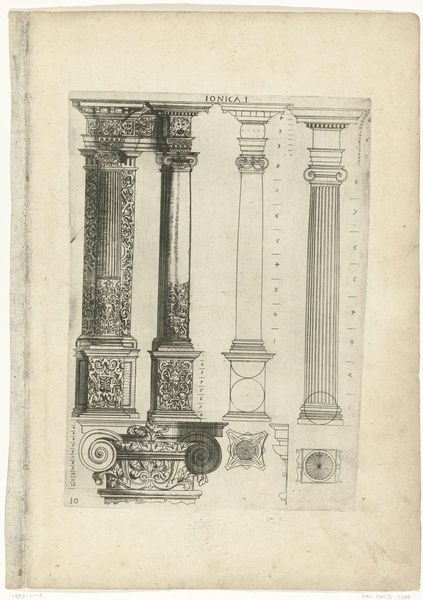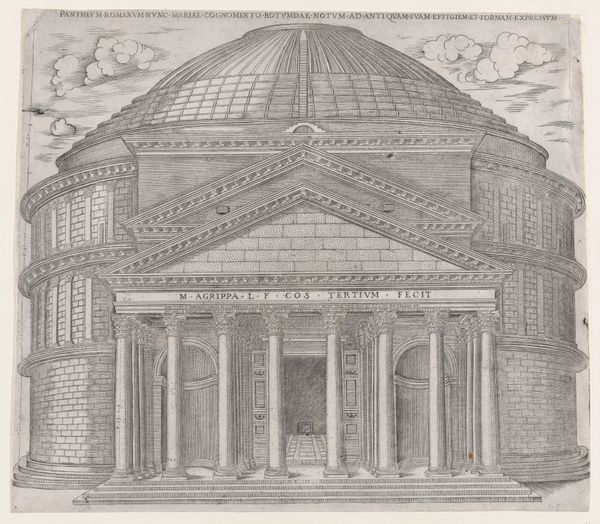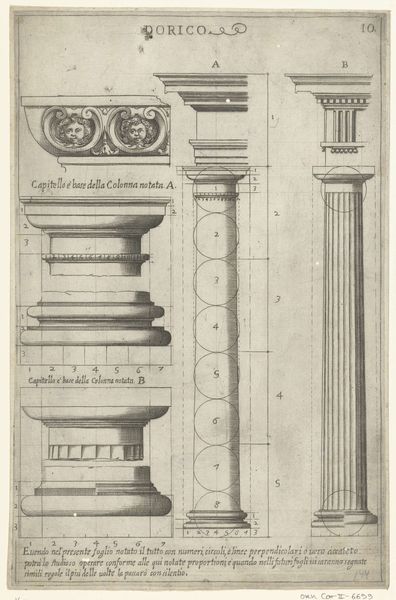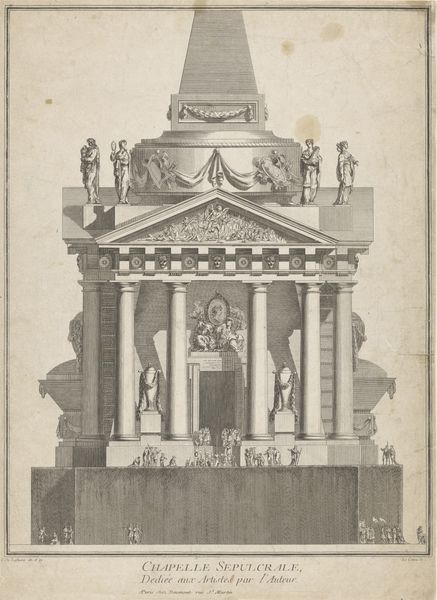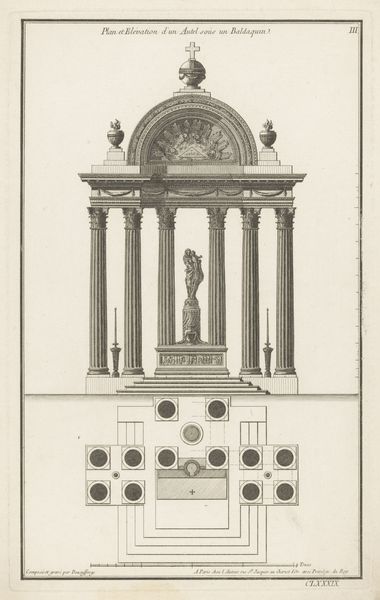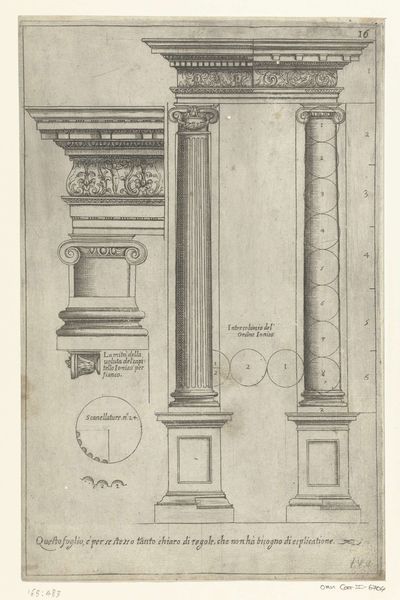
Speculum Romanae Magnificentiae: The Temple of Fortune in Rome 1530 - 1580
0:00
0:00
drawing, print, engraving, architecture
#
drawing
# print
#
form
#
geometric
#
line
#
cityscape
#
italian-renaissance
#
engraving
#
architecture
Dimensions: sheet: 13 7/16 x 19 in. (34.1 x 48.3 cm) plate: 10 3/8 x 13 1/4 in. (26.4 x 33.6 cm)
Copyright: Public Domain
Curator: This engraving, created sometime between 1530 and 1580, comes to us from Nicolas Beatrizet. It’s part of a larger series known as the *Speculum Romanae Magnificentiae*, or “Mirror of Roman Magnificence." This particular image depicts the Temple of Fortune in Rome. Editor: Wow, my first impression? Impressive, but a little…severe. It feels like an architect's precise rendering, more about the structure than any kind of atmosphere. It’s like a building caught in aspic. Curator: Well, the *Speculum* served a vital purpose. These prints allowed people throughout Europe to experience Rome’s architectural wonders without physically traveling there. They were instruments of power projecting Roman imperial ambitions. The detail isn't merely aesthetic, it's about conveying authority. The temple isn't simply there; it's meant to dominate visually. Editor: Dominating, yes, definitely picking up that vibe. But, like, does Fortune approve of being documented with such rigidity? Feels like the opposite of luck’s fluid nature, doesn't it? Curator: That tension is very interesting. On one level, we see an attempt to contain and codify, to represent Roman power and order. At the same time, the choice of the Temple of Fortune raises complex questions around fate, chance, and the unpredictable nature of power itself. After all, empires rise and fall. Editor: You’re right. It makes you think about how nothing lasts forever, even when carved in stone, or meticulously etched in a plate for printing. The crisp lines make me think that everything is knowable but by choosing Fortune as the topic shows how it can be so fleeting. There's some real clever juxtaposition at work here. Makes you wonder if Beatrizet was low-key critiquing Roman ideals, a subtle dig amid the architectural documentation. Curator: A very compelling reading. To view the image beyond its face value requires us to consider that a static image of something always remains bound by social tensions. Its clear lines contrast it and gives a deeper sense of instability to Fortune herself, which becomes, dare I say, a quiet critique through representation. Editor: Well, it was wonderful turning this rigid architectural diagram into something a bit more…fortuitous, don't you think? Curator: I concur! Analyzing artwork within its social and political frameworks helps us find meaning behind what meets the eye.
Comments
No comments
Be the first to comment and join the conversation on the ultimate creative platform.
